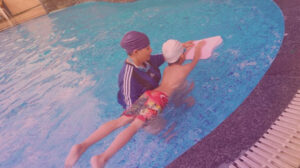PHYSIOTHERAPY HELPS IN DOWN SYNDROME
What is Down syndrome?
Down syndrome (also known as trisomy-21) is a congenital disorder which occurs when there is an error in chromosomal development, and an extra copy of chromosome 21 is made. Individuals with Down syndrome commonly display certain features including variations in their cognitive and physical development. Physical characteristics often seen in people with Down syndrome include: low muscle tone, ligament laxity, short stature, a protruding tongue, and a flat nasal bridge.
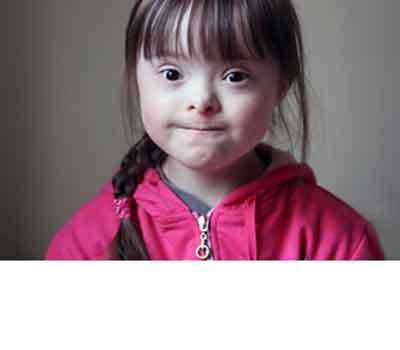
What is “Low Tone”? How it Impacts Gross Motor Development
Low tone or low muscle tone occurs when the length of the resting muscle is longer than it should be, causing the muscle to feel ‘weak’ and ‘floppy’. Individuals with Down syndrome often present with generalized low tone, meaning any or all of their muscles can be affected – including muscles within their arms, legs, neck and back, but also the muscles that are used to swallow, cough and grasp objects.
Gross Motor Milestones for Kids with Down Syndrome
Thinking specifically about infants and children with Down syndrome, having low muscle tone will impact the rate and the order in which gross motor milestones are achieved, such as rolling, sitting, crawling, standing, walking, and jumping. Physiotherapy starts at an early age to promote skills like rolling, sitting and crawling.
Why do children with Down Syndrome need Physiotherapy?
Individuals with DS have hypotonia (low muscle tone) and as babies they are often identified as being “floppy”. The level of hypotonia can vary from child to child but with intervention and improved movement skills the muscle tone will improve. Children with Down Syndrome have decreased muscle strength and this affects a child’s ability to carry out smooth purposeful movement. Children with DS also have ligament laxity which makes them extra flexible at their joints but having too much movement at joints can make a person unstable and it can cause difficulty with early skills like crawling and standing. Children with DS can have shorter arms and legs which can cause difficulties with balance and movement.
In addition there are sensory processing deficits in all the sensory systems as well as impaired ability to take in and register sensory input. Some children can present as clumsy, easily distracted, have poor listening and attention skills, seem to play” too rough” or dislike certain noises or textures and using a sensory integrative approach in physiotherapy is beneficial to these children.
Physiotherapy aims to address any developmental problems that arise, to improve muscle strength and to increase tone in order to help a child maximize their function. It also aims to prevent poor compensatory movement patterns that can cause problems later in life. The goal of Physiotherapy is to enable an individual to achieve maximal functional independence for improved quality of life regardless of a person’s age or ability.
Physiotherapists make use of a number of stimulatory techniques, manipulations, and equipments for strengthening, milestone achievement, and prevention of deformities, improvement of motor skills and gait. Physiotherapy aids in monitoring the child’s endurance status. Similarly Orthopedics is also suggested to help these children.
Here we include activities and exercises to help build motor skills, increase muscle strength, and improve posture and balance for children with Down syndrome.
Physical therapy is an important aspect especially when started early in a child’s life. It helps in honing their other skills. For babies in specific, it enhances their ability to turn over, crawl, and reach. Infants learn to interact with the various objects that form a part of their universe and also helps in achieving milestones. A physiotherapist can also help a child with Down syndrome compensate for physical challenges, such as low muscle tone, in ways that avoid long-term problems. For example, a physiotherapist might help a child establish an efficient crawling or walking pattern to avoid a style that might be painful for the kid.
Early physiotherapy interventions for children with Down Syndrome can help to address any developmental problems and muscle weakness, whilst maximizing function and their quality of life.
How Can Physiotherapy Help Kids with Down Syndrome?
An initial assessment carried out by the physiotherapist will determine the type and severity of difficulties the individual is having with their motor skills and physical functioning. From the initial assessment the physiotherapist will implement an individualized treatment plan which will be tailored to the specific needs and abilities of the individuals.
Physiotherapy for infants and children with Down syndrome can help to do the following:
- Improve muscle strength, posture and balance
- Facilitate development and improve quality of gross motor skills
- Provide play-based exercises that can be completed at home
- Education to parents on how to best support your child’s gross motor development, and how to prevent secondary injuries
- Monitor your child’s hip, knee and foot alignment – recommendations for footwear and orthotics can be provided if needed
- Provide a safe environment for parents and children to work towards specific family goals (for example, going up the stairs into their home, walking outdoors, throwing a ball, etc)
- Reduce the risk of secondary joint problems in later life as a result of lax ligaments and muscle weakness.
- Improve quality of life and confidence.
- Reduce the development of compensatory patterns.
- Increase endurance.
REHABILITATION IN DOWNS SYNDROME
A variety of therapies can be used in early intervention programs and throughout a person’s life to promote the greatest possible development, independence, and productivity. Some of these therapies are listed below.
Physical therapy
Includes activities and exercises that help build motor skills, increase muscle strength, and improve posture and balance.
Physical therapy is important, especially early in a child’s life, because physical abilities lay the foundation for other skills. The ability to turn over, crawl, and reach helps infants learn about the world around them and how to interact with it. A physical therapist also can help a child with Down syndrome compensate for physical challenges, such as low muscle tone, in ways that avoid long-term problems. For example, a physical therapist might help a child establish an efficient walking pattern, rather than one that might lead to foot pain. And some point where physiotherapist mainly focus on are-
Help in achieving delayed milestone
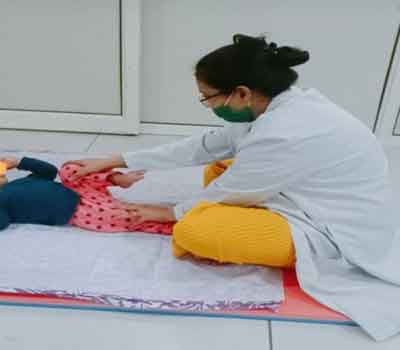
If you feel your child is somewhat delay in achieving their next milestone, physiotherapy is here to help. Whether it’s due to conditions such as Down’s syndrome , or simply a slight delay in their development for a variety of conditions, we can help you create a program of play that’s personally tailored and aimed towards helping your child grow
Improving developmental skills
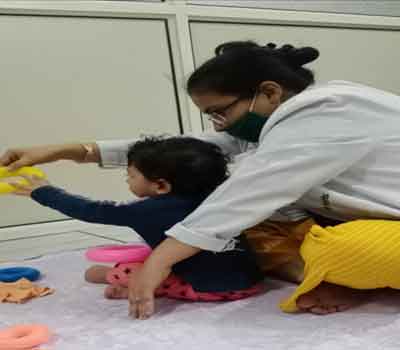
Physical therapists can help your child learn to master motor skills such as crawling, pulling up from sitting to standing, and walking. They can also help caregivers support their child’s movement development by providing hands-on training for positioning, movement, feeding, and play, and suggest changes at home to encourage movement and communication development.
Improve strength
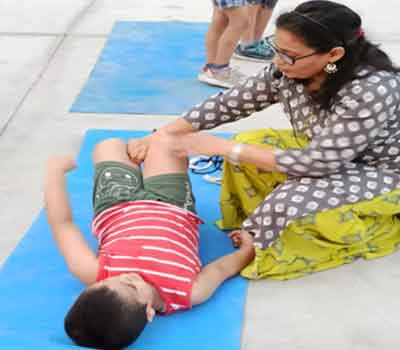
Physical therapists will instruct you and your child on exercises that will increase muscle strength. This will be accomplished through games and fun activities aimed at improving strength in your child’s upper extremities, lower extremities, and core musculature. Building strength is important as a child needs a strong core to sit upright and control their body position before they are able to develop other skills such as fine motor tasks or talking.
Improving stamina
Your physical therapist can teach exercises to improve and increase muscle strength. For children, this can include games and fun tasks that aim at improving strength in the child grows, child’s upper extremities, lower extremities, and core musculature. Building strength is important as a child needs a strong core to sit upright and control their body position before they are able to develop other skills such as fine motor tasks or talking. Also helps in identifying new fitness activities to reduce the risk of obesity and improve and maintain heart health.
Improving balance, coordination, and postural control
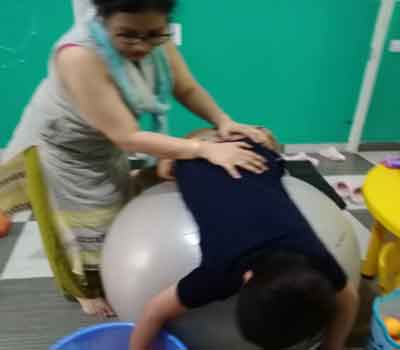
Your physical therapist may use equipment such as a firm, round pillow or an exercise ball to improve your child’s ability to hold the head erect or to maintain a sitting position. Other skills such as jumping, skipping, and dribbling a ball may be incorporated into a fun physical therapy regimen. The physical therapist will improve the child’s ability to walk and play on unsteady surfaces aiding in improving their balance. Bilateral coordination skills such as jumping jacks, skipping, hopping and dribbling a ball will be incorporated into therapy as well.
Improve motor control and developmental skills
Mastering motor skills such as crawling, standing, and walking are vital for child development. Physical therapists will provide hands-on training for positioning, movement, and play that will support attainment of developmental milestones and prevention of inappropriate compensation patterns.
Improving physical fitness
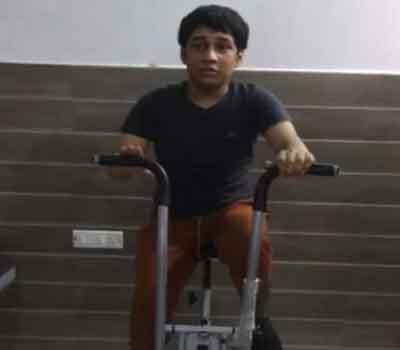
Your physical therapist will help determine the specific exercises, diet, and community involvement that can promote healthy living choices for your child, and prevent complications of DS, such as activity limitations and decreased participation with siblings or peers.
Improving Gait
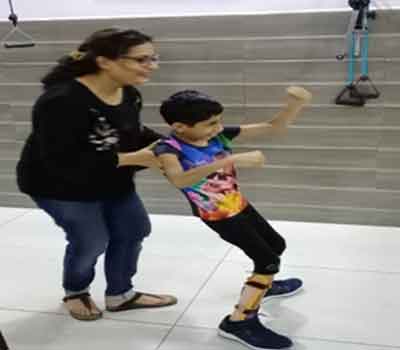
Down syndrome child has to typically learn to walk with their feet wide apart, their knees stiff and their feet turned out. They do so because hypotonia, ligamentous laxity and weakness make their legs less stable. Physical therapy should start with teaching the child with Down syndrome the proper standing posture when he is still very young. So, feet positioned under the hips and pointing straight ahead with a slight bend in the knees. With appropriate physical therapy, gait problems can be minimized or avoided.
Improving posture
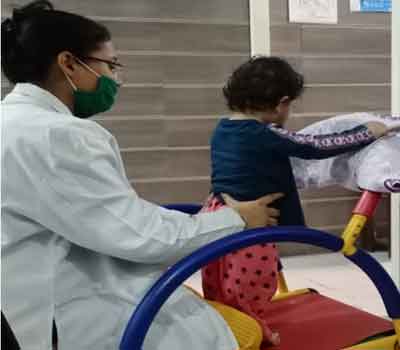
Childers with Down syndrome typically learn to sit with a posterior pelvic tilt, trun rounded and the head resting back on the shoulders. Physical therapy must teach the child the Children with Down proper sitting posture by providing support at the proper level even before the child is able to sit independently. Appropriate physical therapy can minimise problems with trunk posture.
Improving Consciousness
During sports and while out on the playground, children are prone to head injuries, which can easily turn into concussions. Concussions can dramatically affect your child’s concentration, focus, and ability to succeed in school and a number of other activities.
Prevent from injuries and aches
Kids seem to think they’re indestructible and often like to play as if that were really the case. However, children are just as prone to injuries as adults. In fact, with growth spurts and developing bones (“growing pains”), children and youth are even more at risk of injuring themselves during day-to-day activities. A physiotherapist can help them get back to fun and back to being a kid!
Scoliosis

If you’ve been told your child has a scoliosis (an abnormal curve in their back) or suspect that that may be the case, physiotherapy may be an appropriate course of action. Through gentle manual techniques, exercises, as well as other recommendations, we aim to reduce the impacts and the progression of changes in the spine.
Prevent from fracture, sprain and ligament injuries
If your child’s ever experienced a fracture, sprain, or strain, you know how badly they’re itching to get back to their regular activities. Physiotherapy can help the process of recovery and also strives to ensure that children won’t reinjure themselves!
Speech-language therapy
It can help children with Down syndrome improve their communication skills and use language more effectively. Children with Down syndrome often learn to speak later than their peers. A speech-language therapist can help them develop the early skills necessary for communication, such as imitating sounds. The therapist also may help an infant breastfeed because breastfeeding can strengthen muscles that are used for speech.
In many cases, children with Down syndrome understand language and want to communicate before they can speak. A speech-language therapist can help a child use alternate means of communication, such as sign language and pictures, until he or she learns to speak. Learning to communicate is an ongoing process, so a person with Down syndrome also may benefit from speech and language therapy in school as well as later in life. The therapist may help with conversation skills, pronunciation skills, understanding what is read (called comprehension), and learning and remembering words.
Occupational therapy
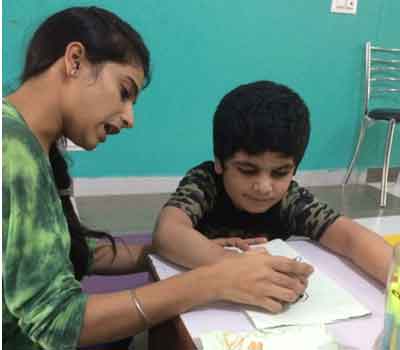
Occupational therapy finds ways to adjust everyday tasks and conditions to match a person’s needs and abilities. This type of therapy teaches self-care skills5 such as eating, getting dressed, writing, and using a computer. An occupational therapist might offer special tools that can help improve everyday functioning, such as a pencil that is easier to grip. At the high school level, an occupational therapist could help teenagers identify jobs, careers, or skills that match their interests and strengths.
Emotional and behavioral therapies
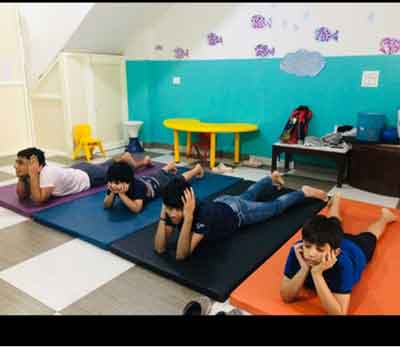
It works to find useful responses to both desirable and undesirable behaviors. Children with Down syndrome may become frustrated because of difficulty communicating, may develop compulsive behaviors, and may have Attention Deficit Hyperactivity Disorder and other mental health issues. These types of therapists try to understand why a child is acting out, create ways and strategies for avoiding or preventing these situations from occurring, and teach better or more positive ways to respond to situations.
A psychologist, counselor, or other mental health professional
Can help a child deal with emotions and build coping and interpersonal skills.
The changes in hormone levels that adolescents experience during puberty can cause them to become more aggressive. Behavioral therapists can help teenagers recognize their intense emotions and teach them healthy ways to reach a feeling of calmness. Parents may also benefit from guidance on how to help a child with Down syndrome manage day-to-day challenges and reach his or her full potential.
HELP YOUR CHILD IN DEALING WITH DOWN SYNDROME WITH BEST PHYSIOTHERAPIST IN DHAKOLI.
A pediatric Physiotherapist always best for any condition that is related to pediatric age group. Because the pediatric Physiotherapist can easily find the root cause and also the psychology of the kid. Moreover they approach the situation accordingly. In Blossom physiotherapy center there is Dr.Jyoti Gupta senior consultant physiotherapist she is MPT in pediatrics and her team always concern about patients problem and treat them accordingly. In Blossom physiotherapy center there is occupational therapist, speech therapist, pediatric neuro therapist and special educators work in very systematic manner so that they will have positive outcome. All are well qualified and experienced enough to tackle any case wisely. Blossom physiotherapy center has well qualified team of physiotherapist in dhakoli and having Ultra modular equipment, physiotherapy modalities and assisted device which are use accordingly.
In Blossom physiotherapy center the doctors plan rehabilitation program which are consider for long term success with visible outcome. Any physical activity program should included are enjoyable activities that are meaningful to the participant. When the child with Down syndrome develop an exercise program, consider what activities he or she will enjoys and improve their life and help in daily activity as well. They also provide friendly atmosphere for the child and parents with the help of that the child become more expressive and feel motivated. Dr. Jyoti Gupta also provide yoga facilities which will play crucial role in rehab and improve stability of mind. Blossom physiotherapy is ready to help you in every manner. For further information log into blossomphysitherapy.


